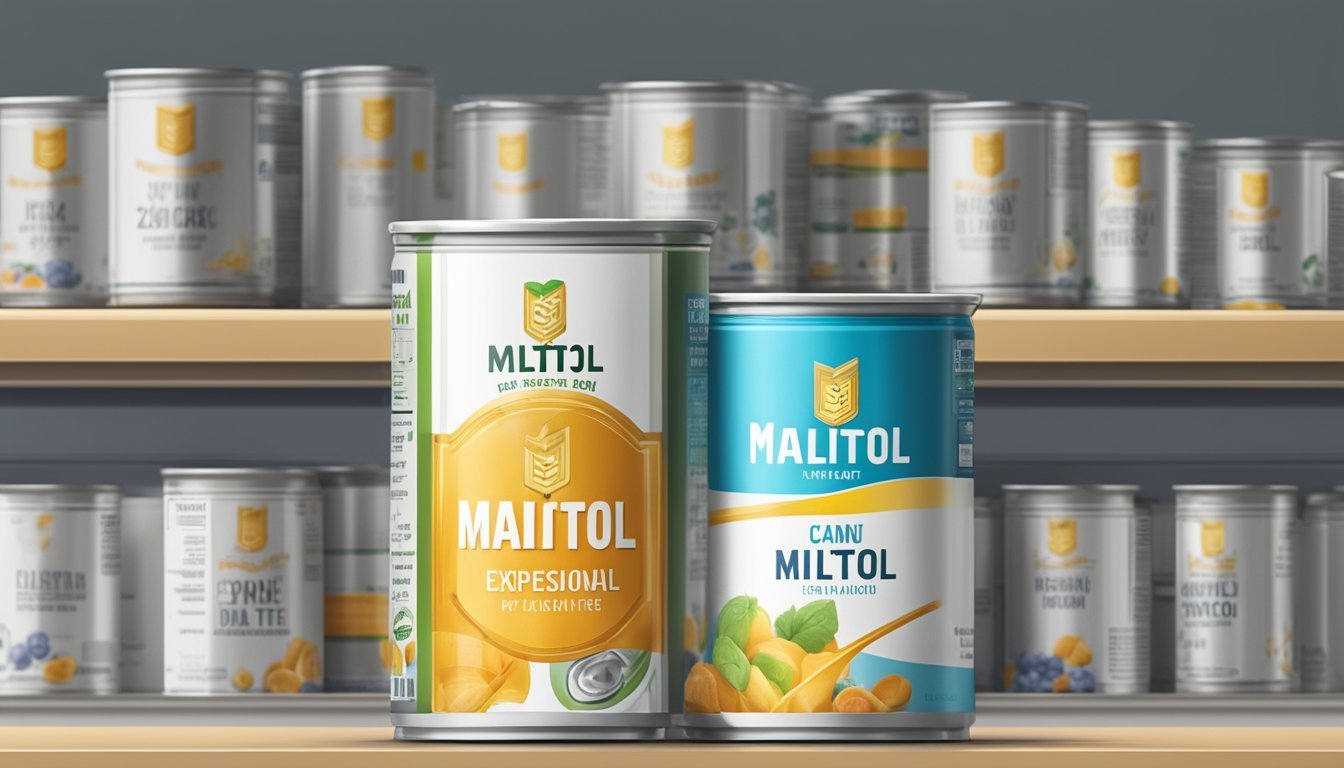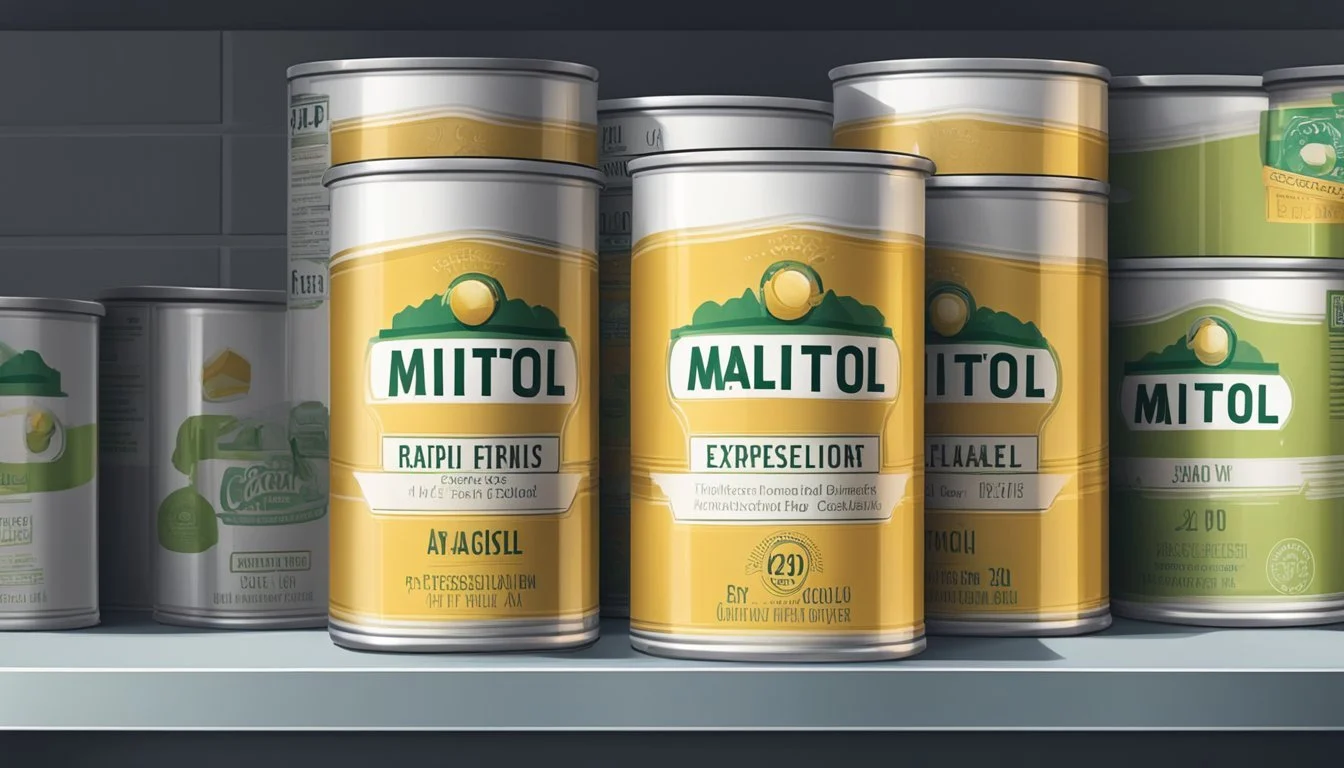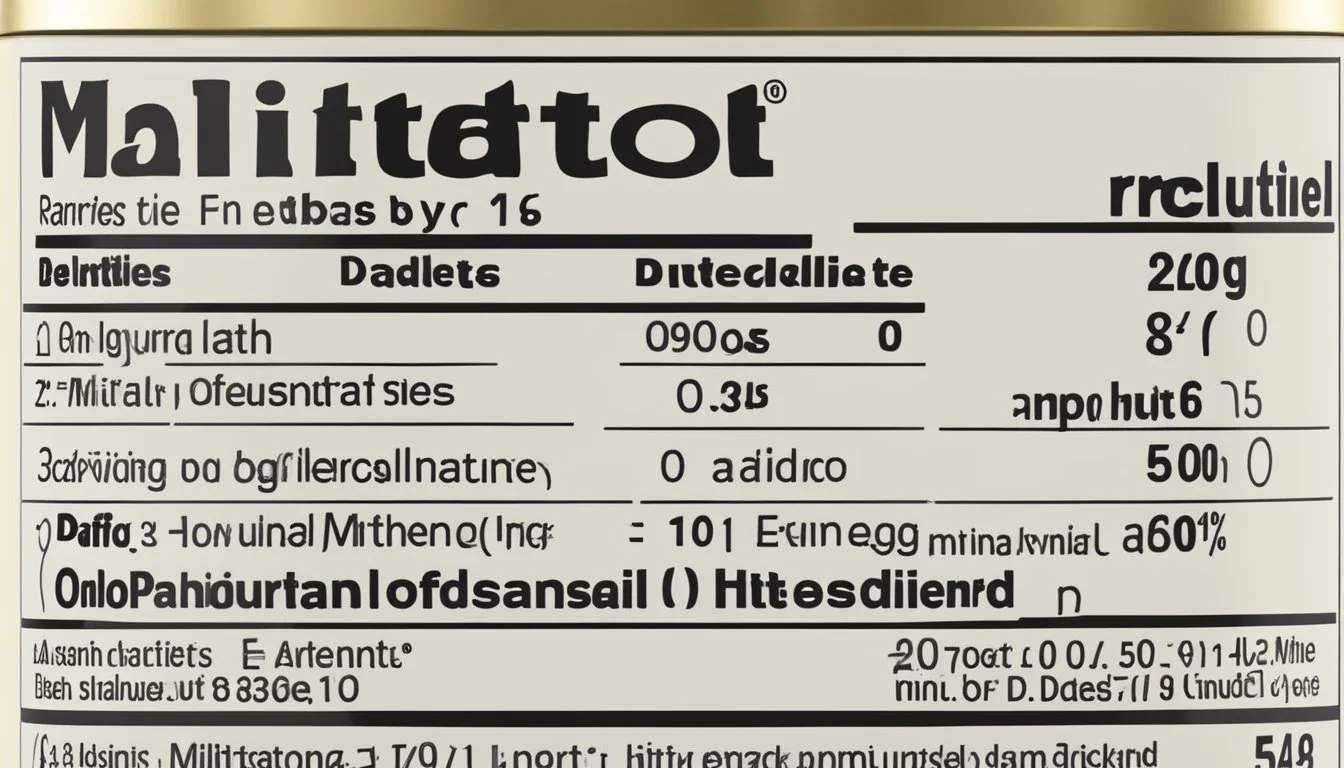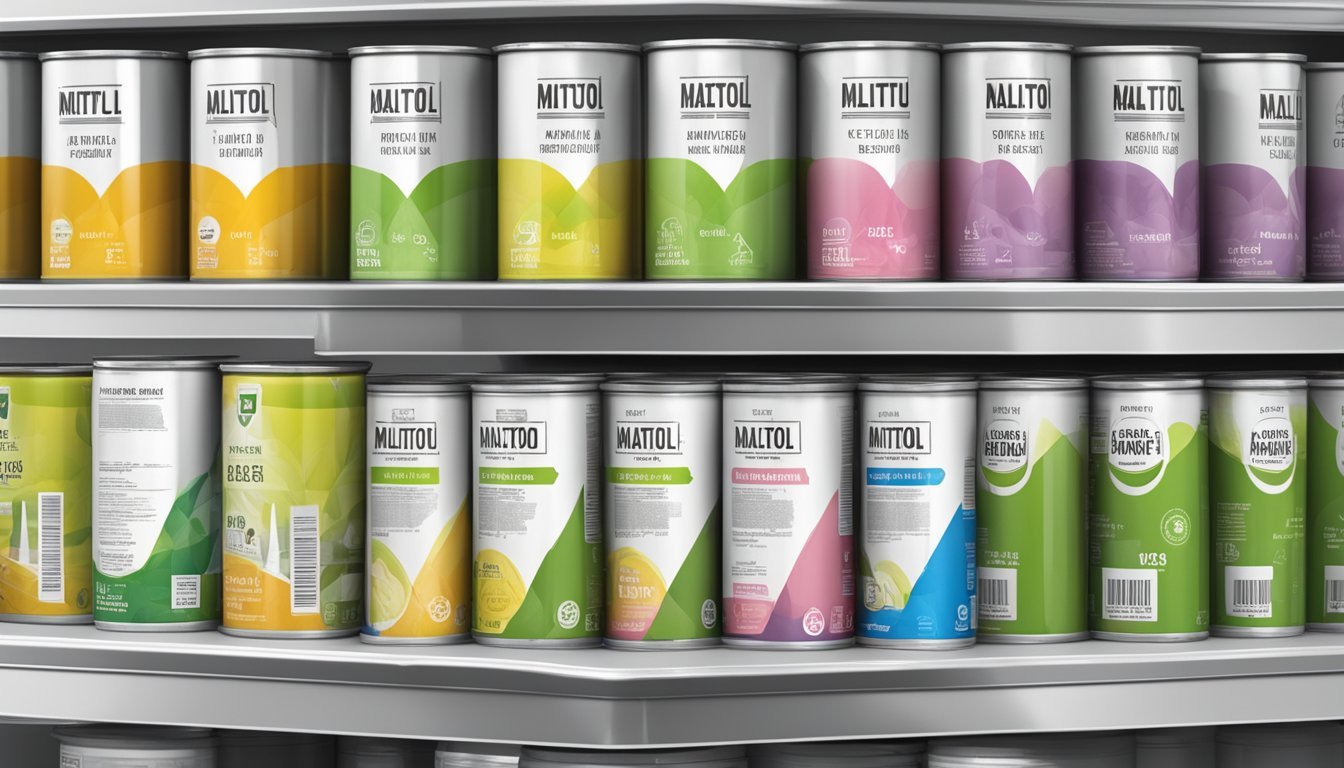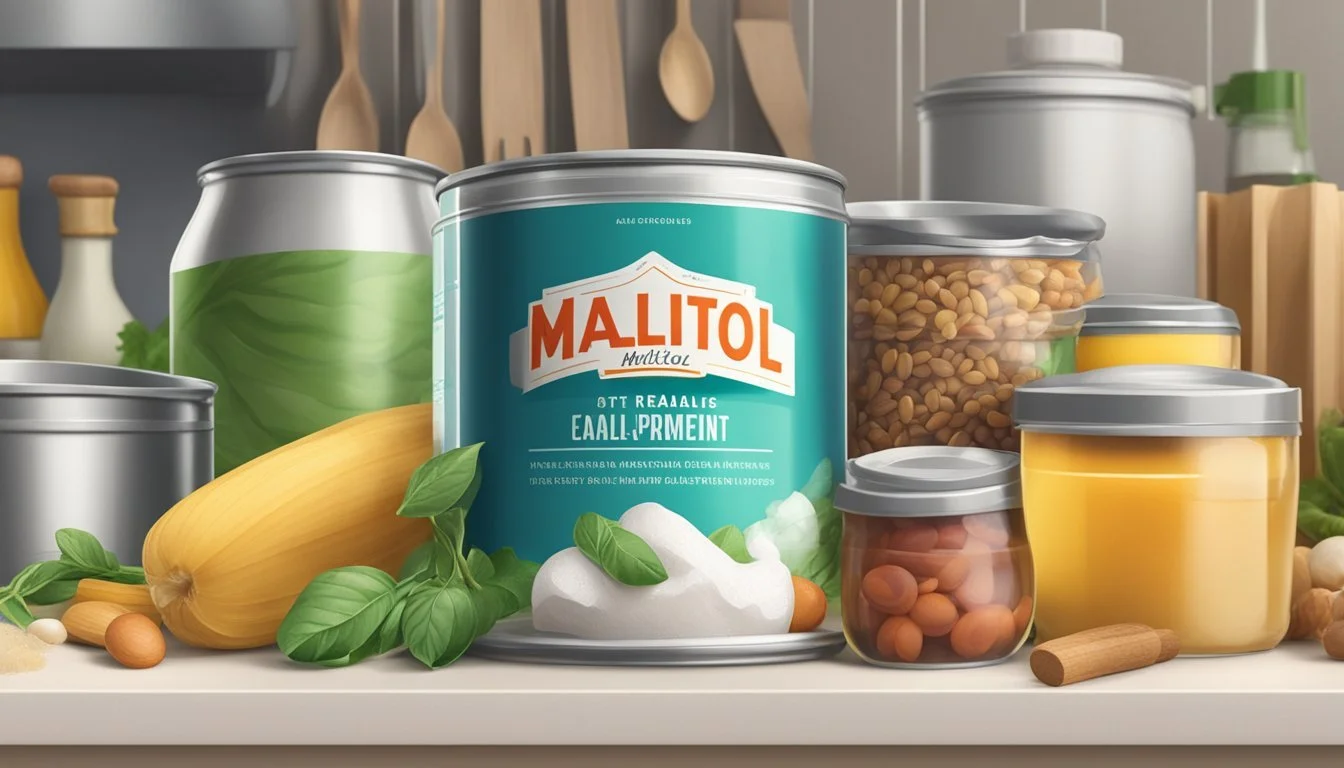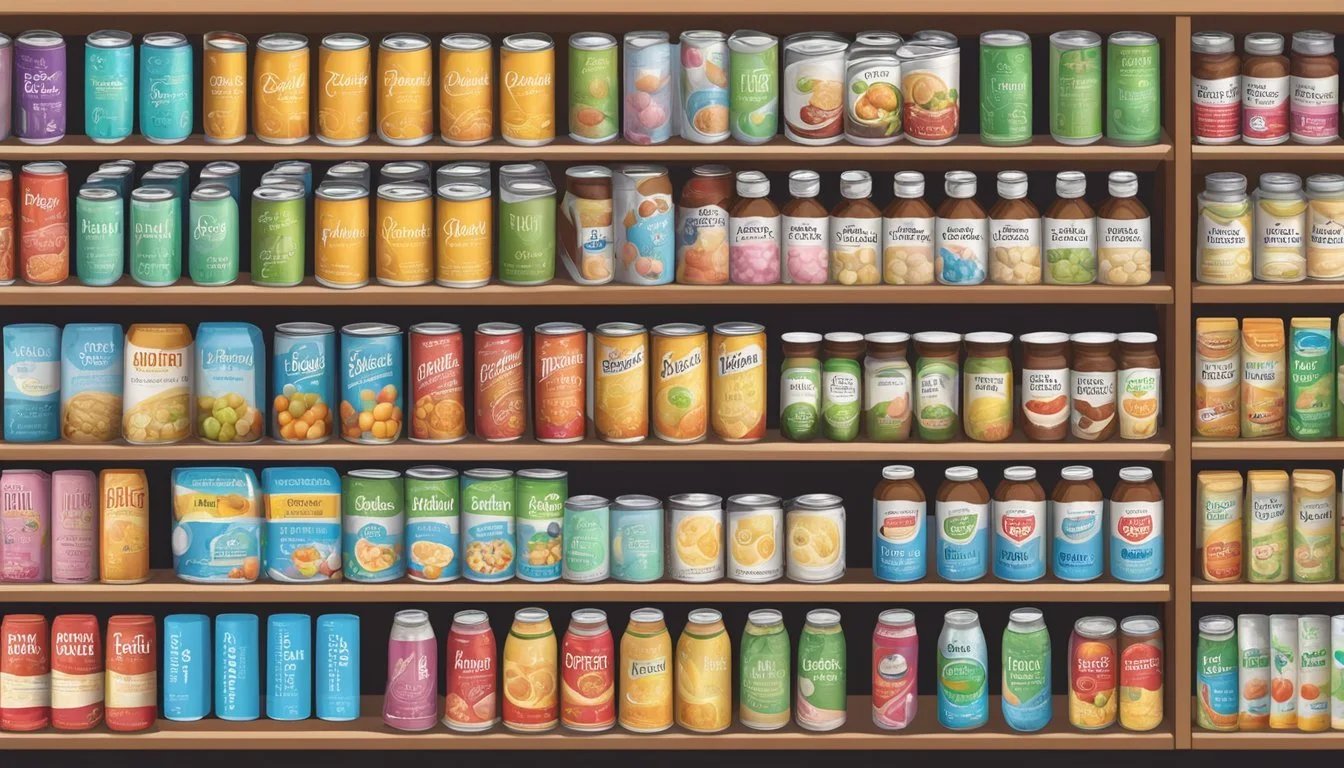How Long Does Canned Maltitol Last?
Shelf Life and Storage Tips
Canned goods are a staple in pantries worldwide due to their lengthy shelf life and convenience. When it comes to sweeteners like maltitol, a sugar alcohol used as a sugar substitute in many products, it is canned as a way to provide a shelf-stable, non-perishable alternative for those looking to manage their sugar intake. While maltitol is known for being a low-calorie sweetener that does not affect blood sugar levels as significantly as traditional sugar, consumers often ponder the longevity of its quality and safety when stored for extended periods.
Understanding the shelf life of canned maltitol is crucial in maintaining its quality and ensuring safety in consumption. Unlike perishables, the canning process of maltitol aims to provide a secure environment that prevents bacterial growth, thereby extending shelf-stability. Proper storage conditions play a significant role as well; when kept in a cool, dry place away from direct sunlight, the integrity of canned maltitol's contents is preserved, minimizing the potential degradation of its sweetness and usability.
When determining how long canned maltitol can last, one should consider several critical factors including the can's integrity, the storage environment, and any 'best by' dates provided by manufacturers. These aspects are pivotal in assessing whether the product remains safe to consume beyond its indicated shelf life. Consumers should regularly check their canned goods for any signs of spoilage, such as rusting, denting, or bulging, which could compromise the safety of the maltitol inside.
Understanding Canned Maltitol
The shelf life and stability of canned maltitol are determined by its chemical properties and the canning process it undergoes. This section explores maltitol's composition and its inherent characteristics that influence its longevity.
What Is Maltitol
Maltitol is a sugar alcohol used as a sweetener in various food products. It is known for being lower in calories than traditional sugar and has a reduced impact on blood glucose levels. Maltitol is commonly included in low-calorie and sugar-free food items due to its nutrition benefits and its ability to replicate the sweetness of sugar.
Properties of Maltitol
Maltitol can be characterized as follows:
Sweetness: It has approximately 75-90% of the sweetness of sucrose (table sugar).
Caloric Content: Offers 2.1 calories per gram, which is lower than the 4 calories per gram from sucrose.
Glycemic Index: Possesses a lower glycemic index than table sugar, leading to a slower increase in blood glucose when consumed.
Stability: Exhibits good chemical stability, which contributes to its long shelf life.
Maltitol's properties make it suitable for individuals seeking lower-calorie sweetener options or those managing their blood sugar levels. Its chemical stability under low-acid conditions and resistance to high temperatures ensure that when canned, maltitol maintains its sweetening power over time without significant degradation.
Canned Food Safety Guidelines
When considering the safety of canned foods, such as those containing maltitol, it is vital to recognize signs of spoilage, understand the implication of can integrity, and be aware of the risks associated with botulism.
Identifying Food Spoilage Symptoms
One must be vigilant in identifying signs that canned food may not be safe to consume. Spoilage symptoms include:
Off odors: An unusual smell emanating from the food upon opening can indicate spoilage.
Discoloration: Any significant change in the food's color might suggest it's no longer safe.
Effects of Dents and Damages
Can integrity plays a crucial role in the safety of canned food. Cans that are dented or damaged can compromise the sterile environment inside, leading to spoilage or contamination. Key points include:
Bulging: Cans that are bulging should be discarded as this is a sign of gas production from bacteria.
Rust and dents: Minor imperfections can be harmless, but severe dents, particularly along seams, can lead to contamination.
Botulism and Foodborne Illnesses
Botulism, caused by the toxin produced by Clostridium botulinum, is a serious foodborne illness linked with improperly stored canned foods. Safety measures include:
Proper storage: Cans should be stored in a cool, dry place and kept away from sources of contamination.
Inspection before use: Before consuming, inspect the can for leaks, bulges, or any signs of damage.
Storage Conditions and Shelf Life
When it comes to maintaining the quality of canned maltitol, proper storage conditions are crucial. Understanding how temperature can affect its longevity and being aware of its shelf life are essential for optimal use.
Ideal Storage Practices
Canned maltitol should be stored in a cool and dry environment to preserve its quality. A pantry or a cupboard away from any heat sources is ideal. It's essential to ensure that the storage area is free from drastic temperature changes, which could compromise the integrity of the can and its contents.
Impact of Temperature on Longevity
Temperature plays a significant role in the longevity of canned maltitol. When stored at a consistent temperature between 50°F and 70°F (10°C and 21°C), the likelihood of spoilage decreases. However, temperatures above this range can accelerate degradation, potentially affecting both the sweetener's taste and safety.
Shelf Life of Canned Maltitol
The shelf life of canned maltitol can be quite extensive when stored correctly. Typically, it can last:
Unopened: 2 to 5 years
Opened: Up to 1 year
Once opened, it's best to transfer the maltitol to an airtight container if it won’t be used immediately to maintain quality. Always check for signs of spoilage, such as off-odors or changes in appearance, before use.
Expiration, Best-By, and Use-By Dates
When dealing with canned maltitol, it's essential to understand food labeling and how it affects the product's longevity and safety. Date labels such as "best-by," "use-by," and "sell-by" provide consumers with information on peak quality rather than food safety.
Deciphering Date Labels
Best-By: This date indicates when the manufacturer believes the product will be at its best flavor and quality. It is not a safety-related date.
Use-By: Typically, this is the last date recommended for use while the product is at peak quality. It is not a purchase or safety date.
Sell-By: This date tells the store how long to display the product for sale. Consumers should buy the product before this date expires, but it isn't necessarily a marker of food safety.
Do Expiration Dates Determine Safety?
An expiration date on food labels, including those on canned maltitol, implies the end of the estimated period of peak quality as determined by the manufacturer. However, many products are still safe to consume after this date provided that the integrity of the can remains uncompromised, with no signs of damage, rust, or swelling.
Food Safety: While the best-by and sell-by dates are useful for enjoying the product when it's fresh, food safety largely depends on can conditions and proper storage rather than strictly adhering to these dates.
Storage Conditions: Consistent, cool temperatures and undamaged packaging contribute to the longevity of canned goods, including canned maltitol.
Maximizing Freshness and Quality
Maintaining the freshness and quality of canned maltitol is crucial for preserving its flavor and texture. Proper storage and handling can extend the shelf life while ensuring the sweetener retains its intended taste characteristics.
Proper Opening and Handling
When one opens a can of maltitol, it is essential to do so in a clean environment to avoid any contamination. They should use utensils that are clean and dry. After opening, the maltitol should be transferred to an airtight container if not used immediately. This helps to retain its freshness and prevent the absorption of other flavors or odors from the surrounding environment.
Extending Shelf Life Post-Opening
Once opened, keeping maltitol in a cool, dry place away from direct sunlight can extend its shelf life and quality. Here are specific storage tips for post-opening:
Temperature: Store in a refrigerator at a temperature range between 35 to 38 degrees Fahrenheit.
Containers: Use containers with tight-fitting lids to prevent moisture and other contaminants.
By adhering to these storage principles, the freshness, quality, and sweetness of maltitol can be maintained, enhancing the flavor and texture of foods it is used in.
Risk Factors and Contamination
When assessing the longevity and safety of canned maltitol, one must consider both the integrity of the packaging and the canning process itself. These two factors contribute significantly to the risk of contamination, which can affect the product's quality and safety for consumption.
Recognizing Unsafe Packaging
A can's physical condition is paramount to determining whether the contents are safe to consume. Consumers should look for signs of rust or leaking, as they are indicative of compromised packaging integrity. Rust can lead to small perforations in the can, allowing air and bacteria to contaminate the contents. If a can shows any signs of leaking, it is best to discard it, as this suggests seal failure.
Understanding the Risks of Improper Canning
Canned maltitol, like other canned goods, is subject to strict regulated processes to ensure that it is free from bacteria and safe to eat. Any deviation from these regulated methods could result in a quality issue, potentially leading to bacterial contamination. One major concern is the presence of bacteria such as Botulism—especially in low-acid foods—that can thrive in improperly canned goods. It is crucial that consumers only purchase maltitol from reputable sources to ensure these standards are met. If there's any suspicion of improper canning—evidenced by bulging cans, off-odors, or spurting upon opening—the product should be considered not safe to eat.
Utilizing Canned Maltitol in Cooking
Canned maltitol is a versatile ingredient in the kitchen, offering a sugar substitute for those desiring lower-calorie options or managing blood sugar levels. When incorporating it into recipes, one should be mindful of its properties to achieve the desired outcome.
Culinary Uses of Maltitol
Maltitol, when derived from canned sources, can be a practical alternative to sugar in cooking and baking. Due to its similar sweetness profile, maltitol can replace sugar in a 1:1 ratio in many recipes. It is particularly useful in making sugar-free versions of confections, baked goods, and desserts. However, it's important to note that maltitol does not caramelize or brown as sugar does, which may affect the final appearance and texture of some dishes.
Pairing with Other Ingredients
When cooking with canned maltitol, one should consider its interaction with other ingredients. For better results in baking, it may be advantageous to combine maltitol with bulking agents or fibers to compensate for its lack of volume compared to sugar. Ingredients that can successfully enhance maltitol’s functionality include:
Eggs: Help bind the mixture, adding structure to baked goods.
Xanthan Gum: A thickener that can help achieve a desirable texture.
Erythritol: Another sugar alcohol, when blended with maltitol, can improve sweetness and reduce potential laxative effects.
Canned maltitol is compatible with a wide range of ingredients, making it a flexible addition to various recipes, from savory dishes to sweet treats, without significantly altering the flavor profile.
Comparison with Other Sweeteners
In the landscape of sweeteners, shelf life is a crucial aspect for consumers and manufacturers alike. Maltitol, a sugar alcohol, is often compared to other sweeteners based on its properties and viability, especially when canned or preserved.
Maltitol vs. Other Canned Sweeteners
Maltitol offers certain advantages when compared with other canned sweeteners. It is known for its long shelf life, much like other sugar alcohols, which typically do not support microbial growth. This makes maltitol a stable option for long-term storage.
Shelf Life:
Maltitol: Can last for years when stored in an unopened can under appropriate conditions.
Aspartame: Less stable under heat and prolonged storage.
Sucrose (Table Sugar): Can last indefinitely, but may harden or change color.
Honey: Known for an almost indefinite shelf life due to its natural preservative properties.
Stability in various conditions is another aspect where maltitol holds its ground:
Heat Stability: Maltitol is more stable than many artificial sweeteners under high temperatures.
Moisture Content: Lower water activity in maltitol-containing products reduces the risk of spoilage.
For consumers focusing on caloric intake and blood sugar levels, maltitol provides a lower-calorie option compared to sucrose and does not raise blood sugar levels as sharply, making it a favorable option for individuals with diabetes or those managing their caloric consumption. However, maltitol can still contribute calories and has a laxative effect when consumed in large quantities.
Sweetener Caloric Content (per teaspoon) Glycemic Index Maltitol 2.1 - 2.4 Calories Low Table Sugar 16 Calories High Honey 21 Calories Moderate-High Aspartame 0 Calories N/A
When selecting sweeteners for preservation or canning, consumers and manufacturers consider the interaction with fresh produce or other foodstuff. Artificial sweeteners like aspartame may not be suitable for preserving fruits due to their instability in heat and potential to break down, whereas maltitol's heat resistance makes it favorable for high-temperature processing, such as canning.
One should also note the potential side effects on digestive health; maltitol, like other sugar alcohols, can cause gastrointestinal discomfort if over-consumed, while this may be less of an issue with sweeteners like aspartame and sucrose.
In summary, maltitol's stability, reasonable caloric content, and low impact on blood sugar levels, combined with its long shelf life, make it a competent contender among canned sweeteners.
Frequently Asked Questions
When addressing the longevity and safe consumption of canned maltitol, one must consider storage practices, shelf life, and signs of spoilage. The following are common queries related to maintaining the quality of canned maltitol.
Can You Freeze Canned Maltitol?
Freezing: Canned maltitol itself may not benefit from freezing due to its high stability at room temperature. It's also worth mentioning that freezing can alter the texture of products. As maltitol is commonly used as a sweetener, its crystalline form, which is stable on the shelf, may not retain its desired qualities if frozen.
How to Detect Spoilage?
Spoilage Detection: Canned goods, including those containing maltitol, typically have long shelf lives. To detect spoilage, one can check for:
Unusual odors
Can bulging or leaking
Changes in texture or color If any of these signs are present, the product should not be consumed.
Can Canned Maltitol Be Consumed Past Date?
Expiration Dating: Canned maltitol may remain edible past the printed expiration date if stored properly and the can's integrity is uncompromised. However, while it remains safe, the quality—such as taste and texture—might diminish over time. Always inspect the can and its contents before use if past the indicated date.
Conclusion
Shelf Life: Canned goods offer a substantial shelf life with proper storage conditions. Canned maltitol specifically, while not commonly found as a standalone product, is often an ingredient in sugar-free preserved items. These items can last beyond their marked expiration dates, remaining safe for consumption, sometimes up to several years provided the can's integrity is intact.
Nutrition and Safety: The nutritional value of maltitol remains stable over time when canned. As a sugar alcohol, maltitol offers a lower-calorie alternative to sugar and does not significantly affect blood sugar levels, making it safe for diabetics under guidance. Consumers should, however, be aware of its potential for causing digestive discomfort if consumed in large amounts.
Storage: To ensure the longevity and safety of canned foods containing maltitol, they should be stored in a cool, dry place away from direct sunlight.
Temperature: Ideal storage temperatures range from 50 to 70 degrees Fahrenheit (10 to 21 degrees Celsius).
Humidity: Low humidity is preferable to prevent rust and corrosion of the cans.
In summary, while the shelf life of canned foods is extensive, including those containing maltitol, they should be consumed for optimal taste and quality within a year of purchase. Always inspect cans for damage, bulging, or signs of spoilage before use and discard any that appear compromised.


